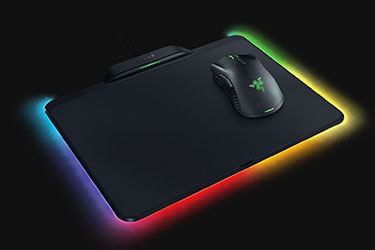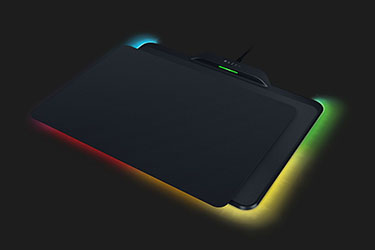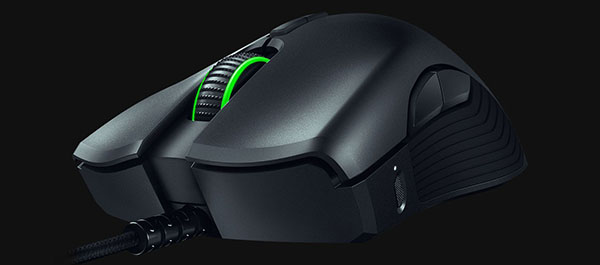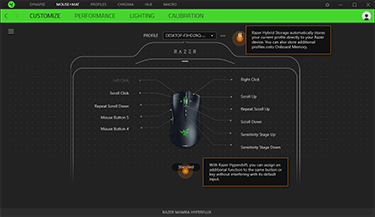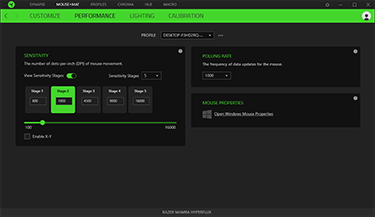Introduction
Manufacturers who cater for the enthusiast crowd have often dallied with wireless peripherals - keyboard and mice, mainly - albeit with limited success. 2018, however, appears to be the year that the bigger names become serious about expanding this market.
There are two broad methods of enabling the humble mouse with freedom. The first, which is most common, sees manufacturers take an existing mouse, arm it with a rechargeable lithium-polymer battery, and then use wireless, Bluetooth (or both) for the connection between it and the host PC. This established technology works well enough, and it's fair to say the premium end of the market offers cable-like performance, though the extra weight of the battery can discourage gamers used to a certain heft.
Another, newer method is to use the wonders of electromagnetic resonance technology (ERT) and charge the wireless mouse through a special pad. The beauty here is that there's no need for batteries in the rodent, thus keeping weight and overall feel like cabled mice that enthusiasts are used to. Naturally with pad and mouse bundled together, Logitech's PowerPlay technology is a good example of this approach.
Razer sees this ERT good enough to invest in. First debuted at this year's Consumer Electronics Show, the green team's response is the Mamba HyperFlux and Firefly wireless solution, costing a whopping £250 and comprising special variants of the Mamba mouse and Firefly mouse mat.
Firefly HyperFlux mouse mat
Taking the mat first, it measures 355mm by 288mm by 13mm. That's standard for any type of charging pad but some gamers may find that frenetic mouse movements run out of space. Size is a personal issue, of course, and for me the Firefly is just about right. Power is sourced via a micro-USB port well hidden inside the central charging point - slotting in the bundled 1.8m braided cable results in a satisfying click, and operation is shown by having a solid green light remain on. Plugging into a computer results in the Chroma edge lighting coming on. The effect is subtle and well done, with intensity and patterns controlled by the company's Synapse 3 software, as shown below.
Not quite a regular Firefly
Iteration 3 of Synapse, still in beta, feels more intuitive than the outgoing version, with the peripheral options at the top followed by configuration tabs below. As expected, one can choose a vast number of effects and any of 16.8m colours from the Chroma lighting. The default, single-colour breathing produces an attractive effect.
Back on to the physicals, the bottom of the mat has a non-slip rubber base while, along with Logitech, Razer bundles a double-sided cloth mat. One is hard and the other soft, and each is primed for use in different games, with the former arguably more useful in titles that require lots of fast movements and lifts, whilst the soft works better when the mouse stays on the mat and tracks - first-person shooters come to mind. Going by our description thus far, there's no obvious difference between this and the regular Firefly, available in either cloth or hard editions, not both. That's not true. A lack of a Razer tri-snake logo on the top-right is one indication. The other, unseen, is the built-in ERT we spoke of above.
Mamba HyperFlux
The mouse, for the most part, is a known quantity, as it is based on the popular Mamba line, though there are design differences between this and the standard wireless edition. Let's describe what's different first. Razer simplifies (cheapens) the aesthetic by removing the RGB light strips present on either side, though the scroll wheel and Razer logo carry over such illumination. Razer also changes the side-grip texture, and comparing side by side, I prefer the original.
A small LED section on the back denotes that the mouse is in operation. If it matters to you, this model doesn't have the Adjustable Click Force Technology which, as the name suggests, enables the two primary buttons to adjust the amount of force needed to actuate clicks. Hardly a deal breaker, mind. Designed for right-handed users, HyperFlux is essentially the same size as the wireless model, too, measuring 125mm x 70mm x 43mm, meaning it fits in well to the palm. Should you wish to use it wired, the same cable powering the mat is plugged into the front, but doing so kind of defeats the intended purpose. This Mamba carries the same 16,000DPI sensor found in the normal version and other Razer mice including the Basilisk, with which it also shares the side-grip design.
Easy configuration via Synapse
Most wireless mice tend to tip the scales at around 120g, with 30g or so for the necessary battery. Not so here, and unlike Logitech's rival Powerplay, Razer is able to keep the weight below 100g - 96g, to be exact - because the mat charges the Mamba HyperFlux directly via magnetic induction, meaning there is no need for a battery in the rodent. The downside to this approach is that the mouse needs to be in contact with the mat at all times, of course, and any lift-offs could cause problems, yet Razer gets around this pesky problem by having a supercapacitor in lieu of the battery. The purpose is the same, that is, to have some temporary charge in lift-off scenarios.






